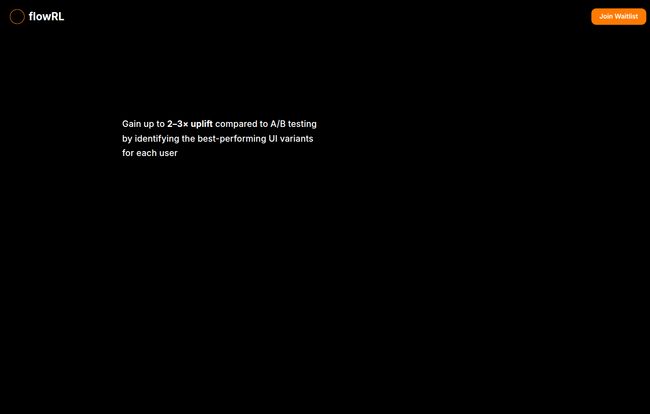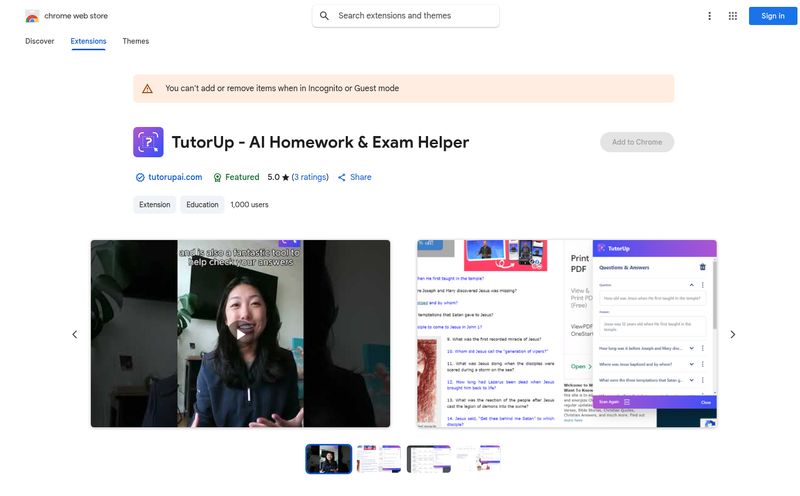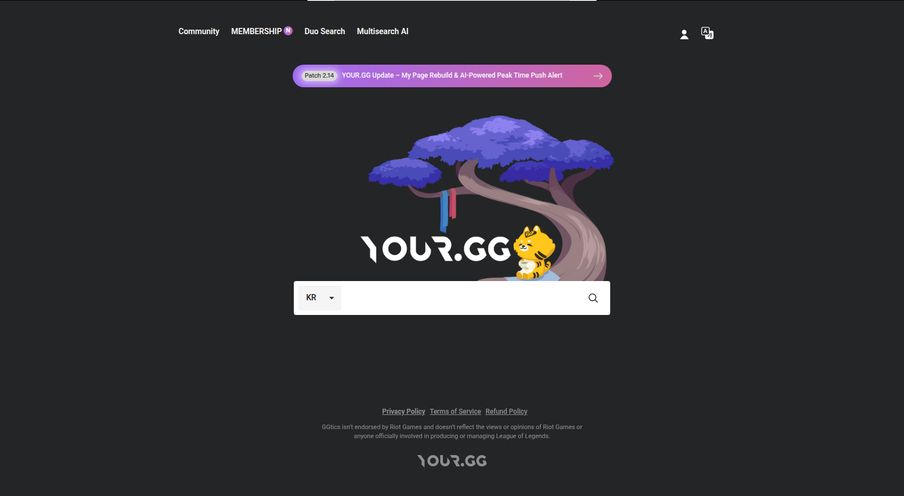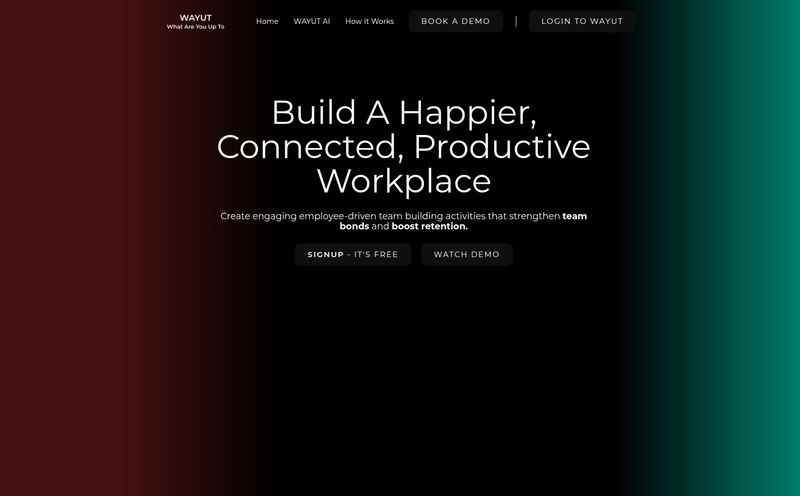How many times have you poured your heart, soul, and a significant chunk of your quarterly budget into an A/B test... only for it to come back with a shrug? You know, the classic "statistically insignificant" result. Or worse, the “winner” gives you a pathetic 1.2% lift, and you have to pretend to be excited about it in the weekly meeting. It’s a frustrating cycle, one I’ve been stuck in more times than I care to admit.
We’ve been taught to worship at the altar of A/B testing. It’s the gold standard for data-driven decisions, right? And for a long time, it was. But I’m starting to think we’ve hit its ceiling. The whole model is based on finding a single winner, a one-size-fits-all solution that pleases the most people. It's democracy applied to user interface, and just like in politics, it often results in a compromise that nobody is truly passionate about.
But what if we could move beyond that? What if, instead of finding the one UI that works okay for everyone, we could show each user the perfect UI for them? That’s the promise of a new wave of tools, and one called flowRL recently caught my eye. It's making some bold claims, and as a seasoned, slightly cynical SEO pro, my interest is definitely piqued.
So What is flowRL, Anyway?
At its core, flowRL is a platform that uses AI—specifically a flavor called Reinforcement Learning (RL)—to personalize your website or app's user interface for every single visitor. In real-time.
Think of it like this. A/B testing is like a department store that puts one outfit on its main mannequin. They hope that one style appeals to enough shoppers to drive sales. FlowRL, on the other hand, is like a world-class personal shopper. It gets to know each customer instantly—what they've clicked on, where they came from, how they behave—and presents them with the exact outfit they’re most likely to buy. It's not one-size-fits-all; its a perfect fit, every time.
This isn't just about swapping out button colors. The platform claims its machine learning models can optimize for pretty much any objective you care about, from boosting revenue and customer lifetime value (LTV) to improving retention. It does this by learning from every single click, constantly refining its strategy without you having to run another grueling two-week test. The machine does the heavy lifting, so you can focus on, you know, building a great product.
The Big, Glaring Problem with Our Beloved A/B Tests
The folks at flowRL put up a graph on their site that perfectly illustrates the problem. It shows a user distribution for a test. Sure, the “new variant” won, but only a small minority of users actually preferred it. The vast majority still liked the old version better. So when you roll out the “winner” to 100% of your traffic, you’re actually making the experience worse for most of your audience. Madness!

Visit flowRL
We’ve all seen this. A new design might resonate with power users but confuse newcomers. A simplified CTA might work for mobile traffic but underperform on desktop. A/B testing forces us to pick one, effectively telling a huge chunk of our audience, “Sorry, your preference doesn’t matter.” We’re optimizing for the average, and in doing so, we’re leaving a ton of potential conversions and user goodwill on the table. We’re settling for the least offensive option, not the most effective one.
How flowRL Flips the Script with Reinforcement Learning
This is where things get interesting. Instead of running a static test with a start and end date, flowRL’s approach is dynamic and perpetual. It’s a learning system, not just a measurement tool.
Individualized User Experiences
The system predicts which UI variant is most likely to appeal to each user and serves it to them. Let's say you're testing a minimalist homepage against a feature-packed one. A new user might see the simple version to avoid overwhelm, while a returning power user gets the dense one with all the shortcuts they love. Both users get what they need. Nobody is compromised.
It Learns as It Goes
This is the real magic of Reinforcement Learning. Every interaction is a data point. Did the user click? Did they convert? Did they spend more money? The AI takes that feedback and immediately adjusts its strategy. It's like a CRO expert watching over every single user session, 24/7, making tweaks on the fly. This continuous learning loop is something traditional A/B testing just can’t replicate.
The Promised Land: A 2–3x Metric Uplift?
Okay, here's the headline claim: “Gain up to 2–3× uplift compared to A/B testing.” My internal BS detector always twitches when I see numbers like that. We've all been burned by martech tools promising the moon. However, the logic here is surprisingly sound. If you can stop making the experience worse for 60% of your users and instead give every segment the experience they actually want, it's not crazy to think the cumulative gains would be massive. You’re not just getting a lift from one winning variant; you’re getting a lift from all your variants, served to the right people. It’s a portfolio approach to optimization, and it just makes sense.
Let’s Be Real: The Potential Hurdles
Now, I’m not saying flowRL is a silver bullet you can just install and forget. No tool is. Based on the info available and my experience with similar platforms, here are a few things to keep in mind:
- Implementation Isn't Magic: This isn’t a simple WordPress plugin. You’ll need some developer resources to integrate it with your site or app. You have to feed the machine, and that requires a proper setup.
- Data is King: The system is only as smart as the data you give it. If your analytics are a mess, or if you have very little traffic, the AI will struggle to learn effectively. Garbage in, garbage out.
- Some Expertise Required: While it aims to automate things, getting the most out of a powerful system like this will probably require someone who understands the basics of AI and machine learning to configure and monitor it optimally.
What About the Price Tag?
This is the big question, isn't it? As of right now, there’s no public pricing page for flowRL. The only call to action on their site is to “Join Waitlist.” This is typical for a new, powerful platform in its early stages. They’re likely vetting early customers to ensure a good fit and gather feedback.
If I had to guess, I'd expect a tiered SaaS model, probably based on your traffic volume or the number of personalized events. It certainly won’t be cheap—tools that can deliver a 2-3x lift in revenue never are—but if it delivers on its promise, the ROI could be a no-brainer. For now, we'll have to wait and see.
Frequently Asked Questions about flowRL
Is flowRL just a fancy A/B testing tool?
Not at all. A/B testing finds a single winner for all users. FlowRL is a dynamic personalization engine that finds the best UI variant for each individual user in real-time, constantly learning and adapting.
What kind of metrics can flowRL optimize for?
According to their site, it can be configured to optimize for almost any target objective. This includes top-of-funnel metrics like click-through rates, but also deeper business goals like user retention, revenue, and customer lifetime value (LTV).
Do I need to be a data scientist to use flowRL?
Probably not to get it up and running. These tools are often designed to be user-friendly for product managers and marketers. However, having some technical or AI/ML expertise on your team would likely help you unlock its full potential and fine-tune its performance.
How does flowRL handle brand new users (the “cold start” problem)?
This is a classic question for any personalization AI. While their site doesn’t specify, these systems typically handle new users through a process of “exploration.” It will likely show new users a few different variants to quickly gather data before it starts making confident predictions about what they’ll prefer.
Can I start using flowRL today?
Not yet. The platform is currently in a pre-launch phase. You can visit their website and sign up for the waitlist to get in line for access.
Is It Time to Join the Waitlist? My Final Thoughts
For years, we've been stuck in the local maximum of A/B testing. We’ve been tweaking our way to incremental gains, all while ignoring the simple fact that our users are not all the same. A tool like flowRL represents a fundamental shift in that thinking. It’s a move from finding the best average experience to crafting the best individual experience.
Am I 100% sold? Ask me again when I get off the waitlist and see the dashboard. But I am genuinely excited. The concept is powerful, the technology is proven in other fields, and the potential impact is huge. If you’re a product manager, CRO specialist, or founder who is tired of chasing statistical significance on a 1% lift, this might just be the evolution you've been waiting for. I've already put my name on the list. Maybe you should too.
Reference and Sources
- The official website for the tool: flowRL.com
- For a deeper understanding of the core technology: What is Reinforcement Learning? by deepsense.ai



